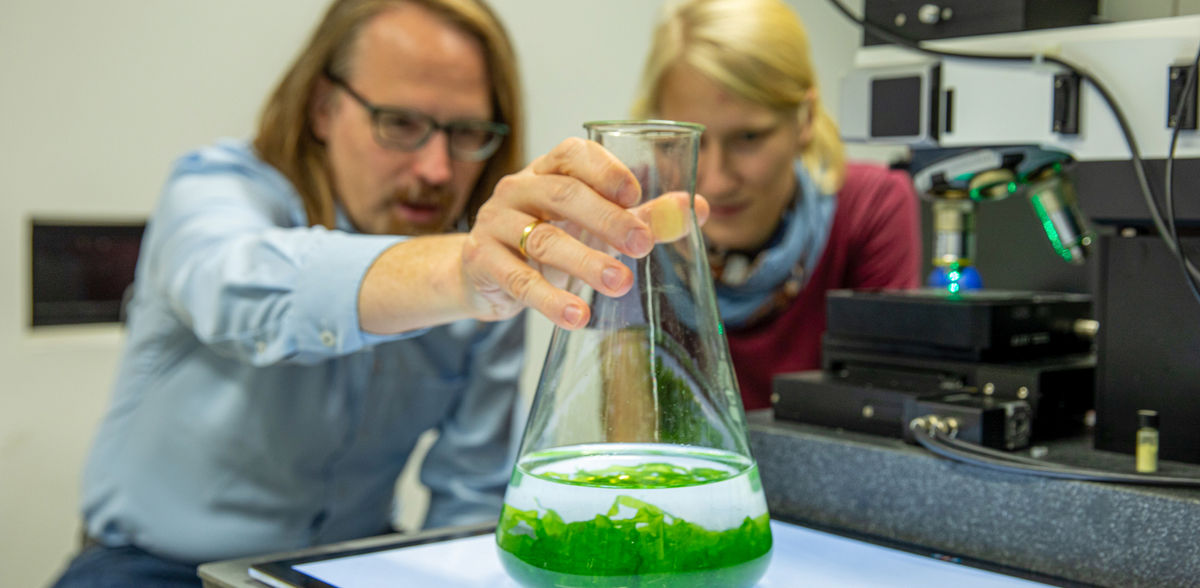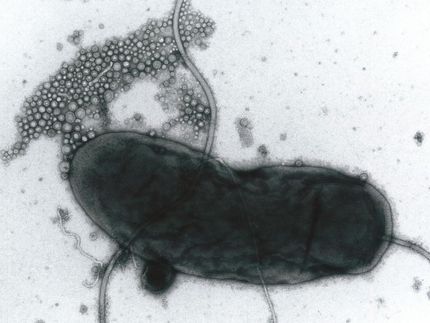Research team decodes symbiotic interactions in marine algae using raman spectroscopy
Implications for biotechnology and environmental protection
In a recent study, researchers from the Leibniz Institute of Photonic Technology (Leibniz IPHT) and the Friedrich Schiller University Jena have shown how they can non-invasively and non-destructively investigate the growth and interactions of the green alga Ulva and its bacterial community using Raman spectroscopy. This method allows precise analysis of algae development without disturbing the sensitive processes. The study was published in the journal ChemPhysChem.
Algae such as Ulva, also known as sea lettuce, play a vital role in marine ecosystems and could become increasingly important in biotechnology and energy production in the future. Bacteria are essential for the normal growth and development of algae. Until now, it has been difficult to study these processes in real time without affecting the algae. This is where Raman spectroscopy comes in.
New Insights into Cell Growth
In close collaboration with the University of Innsbruck, the Jena research team used Raman spectroscopy to obtain detailed information about the chemical composition of algal cells and their interactions with bacteria. This method uses laser light to probe molecules inside cells, allowing researchers to detect changes in cell structure without the need for dyes or markers.
"Our goal was to develop a technique that allows us to accurately capture the subtle differences in the cell structure of algae and their interactions with bacteria," explains Constanze Schultz of Leibniz IPHT, lead author of the study. "Raman spectroscopy gives us a unique opportunity to analyze these processes directly in water without disturbing the samples."
Implications for Biotechnology and Environmental Protection
The results of the study could deepen our understanding of the role of algae and their bacterial partners in ecosystems. As algae are increasingly used for food and energy production, this research could contribute to the development of more efficient methods for algae cultivation. Insights into molecular cell wall synthesis and the formation of abnormalities are particularly relevant, as they could help improve resistance to various environmental factors and reduce susceptibility to disease.
Original publication
Constanze Schultz, David Zopf, Andreas Holzinger, Anja Silge, Tobias Meyer‐Zedler, Michael Schmitt, Thomas Wichard, Juergen Popp; "Raman Spectral Analysis in the CHx‐Stretching Region as a Guiding Beacon for Non‐Targeted, Disruption‐Free Monitoring of Germination and Biofilm Formation in the Green Seaweed Ulva"; ChemPhysChem, Volume 25, 2024-7-23
See the theme worlds for related content
Topic World Spectroscopy
Investigation with spectroscopy gives us unique insights into the composition and structure of materials. From UV-Vis spectroscopy to infrared and Raman spectroscopy to fluorescence and atomic absorption spectroscopy, spectroscopy offers us a wide range of analytical techniques to precisely characterize substances. Immerse yourself in the fascinating world of spectroscopy!

Topic World Spectroscopy
Investigation with spectroscopy gives us unique insights into the composition and structure of materials. From UV-Vis spectroscopy to infrared and Raman spectroscopy to fluorescence and atomic absorption spectroscopy, spectroscopy offers us a wide range of analytical techniques to precisely characterize substances. Immerse yourself in the fascinating world of spectroscopy!


























































